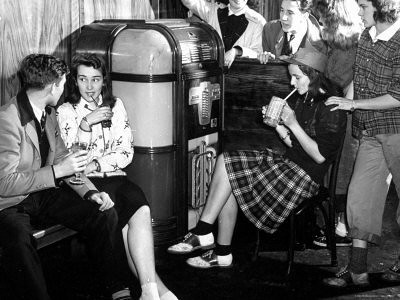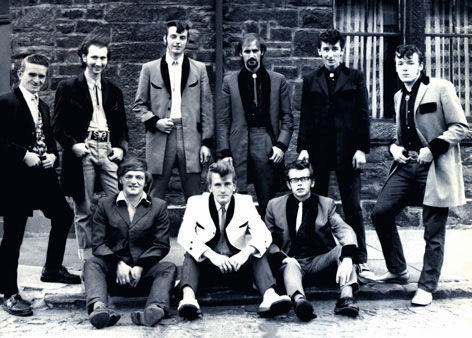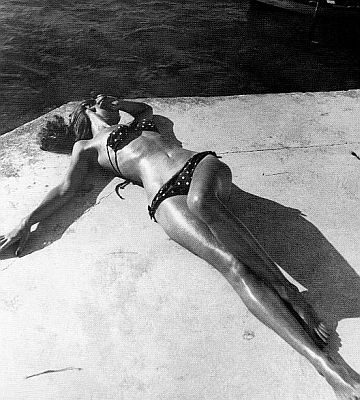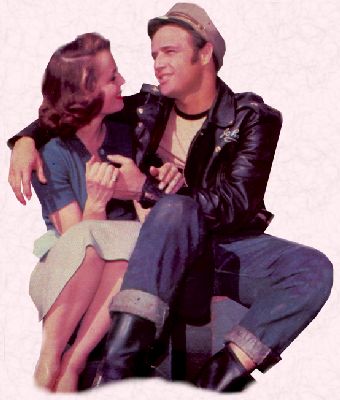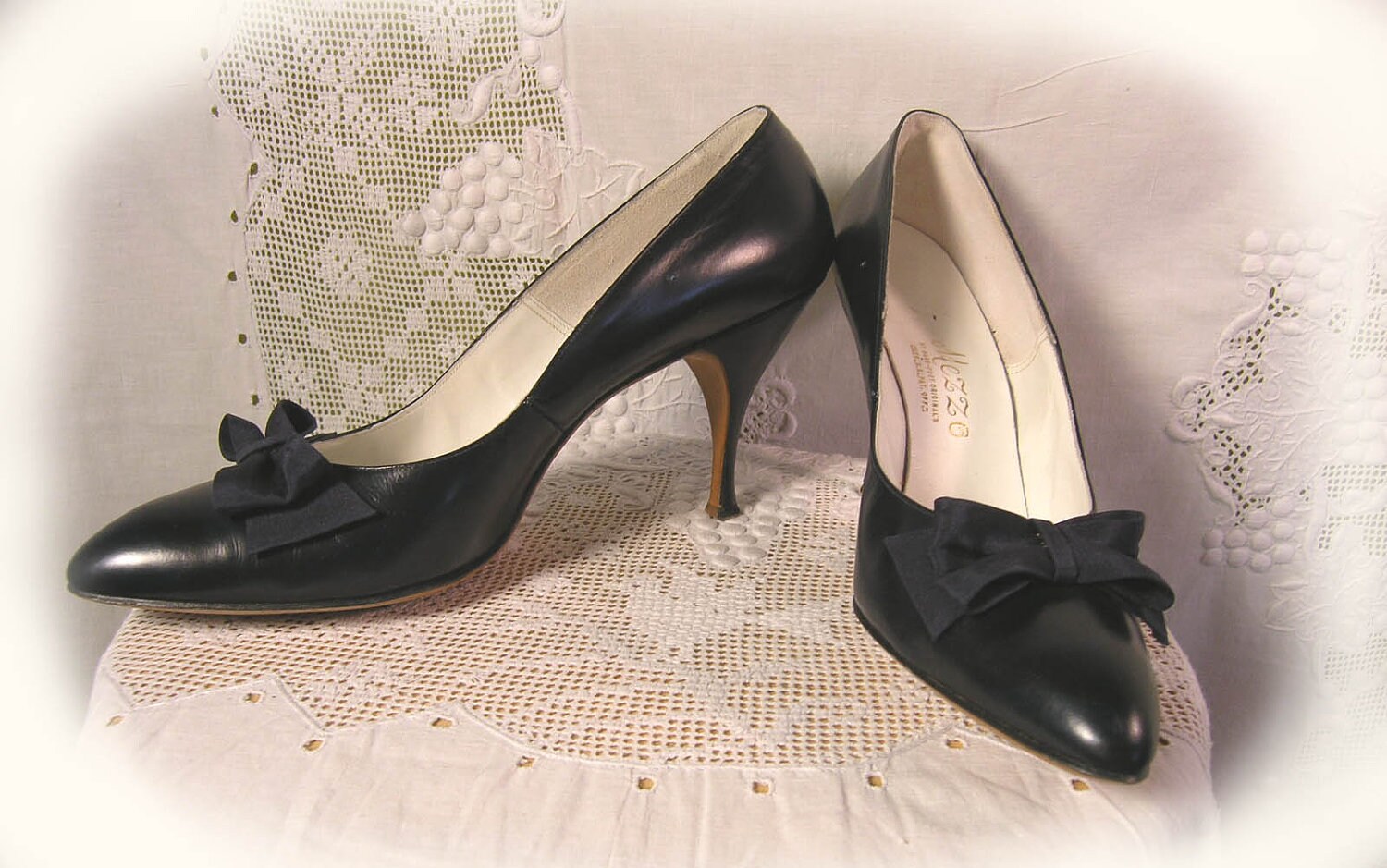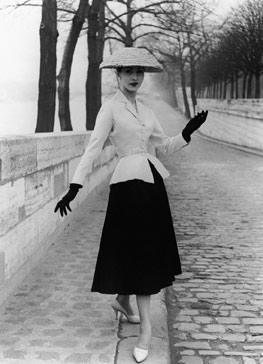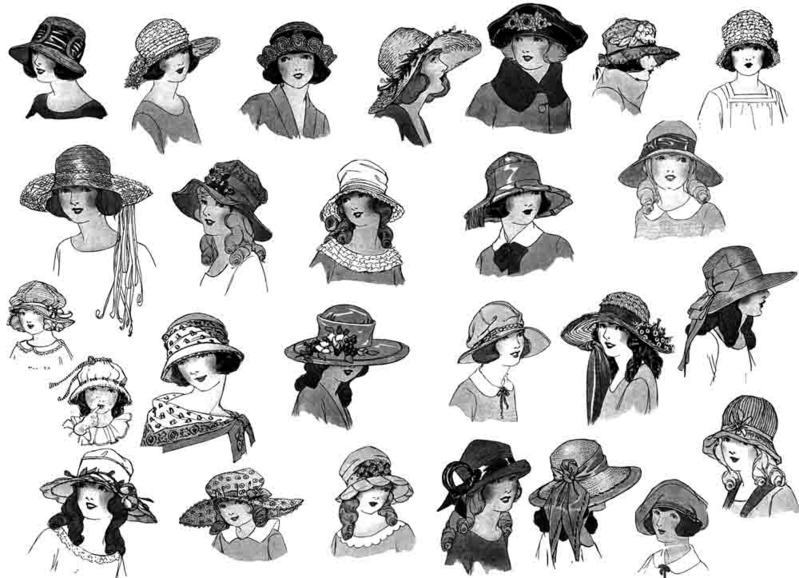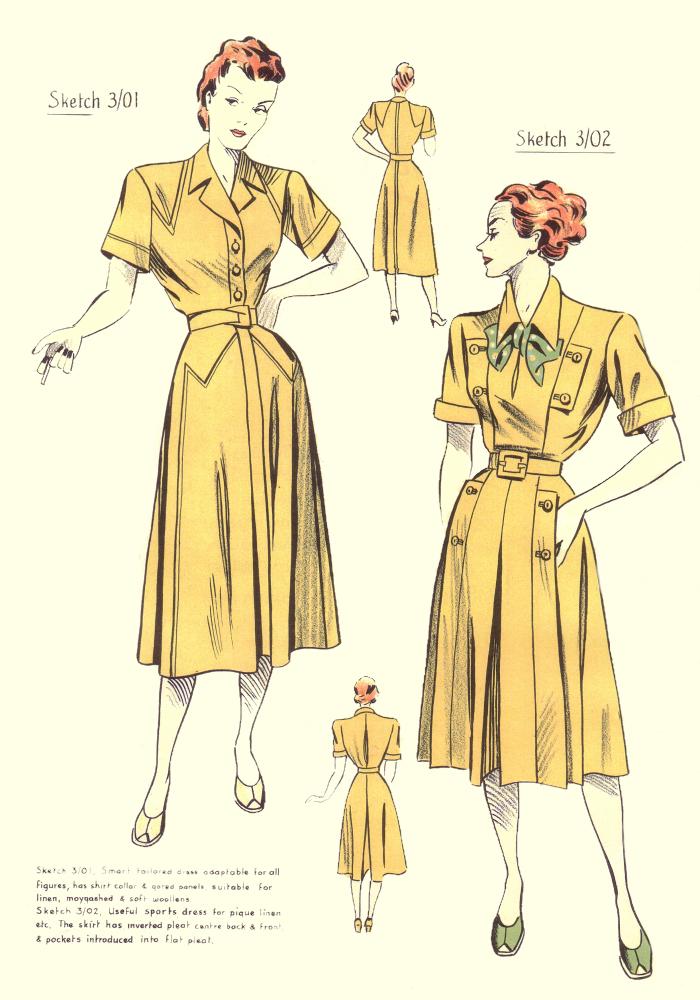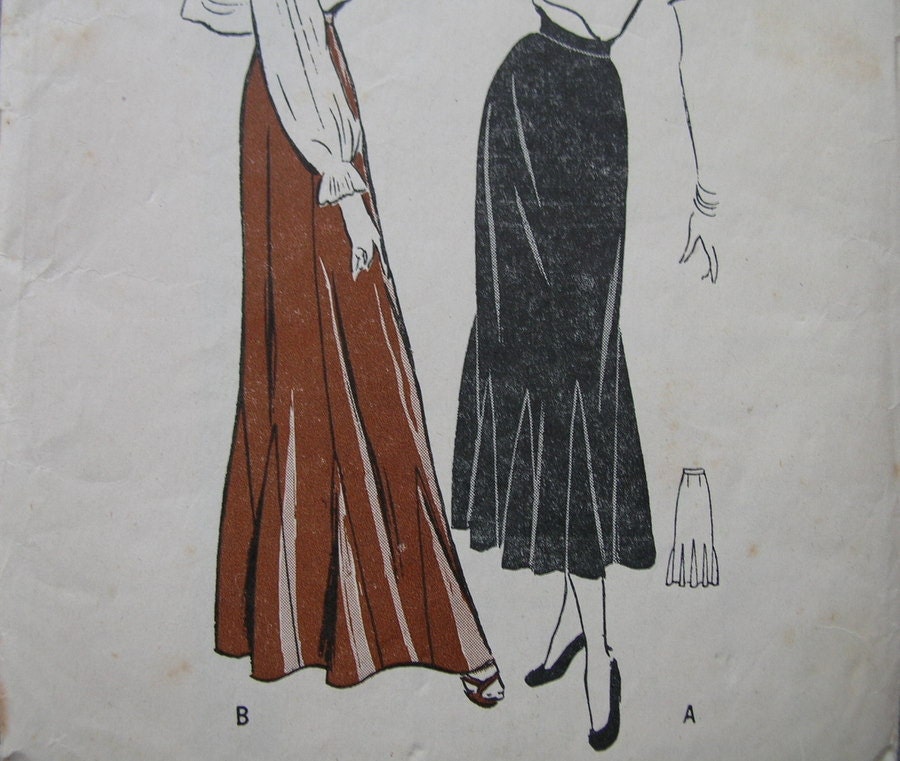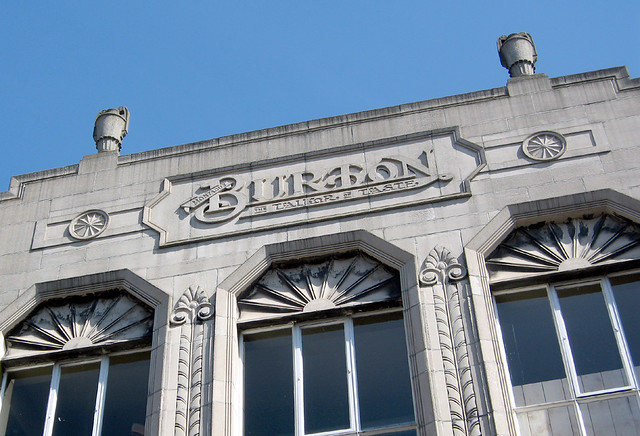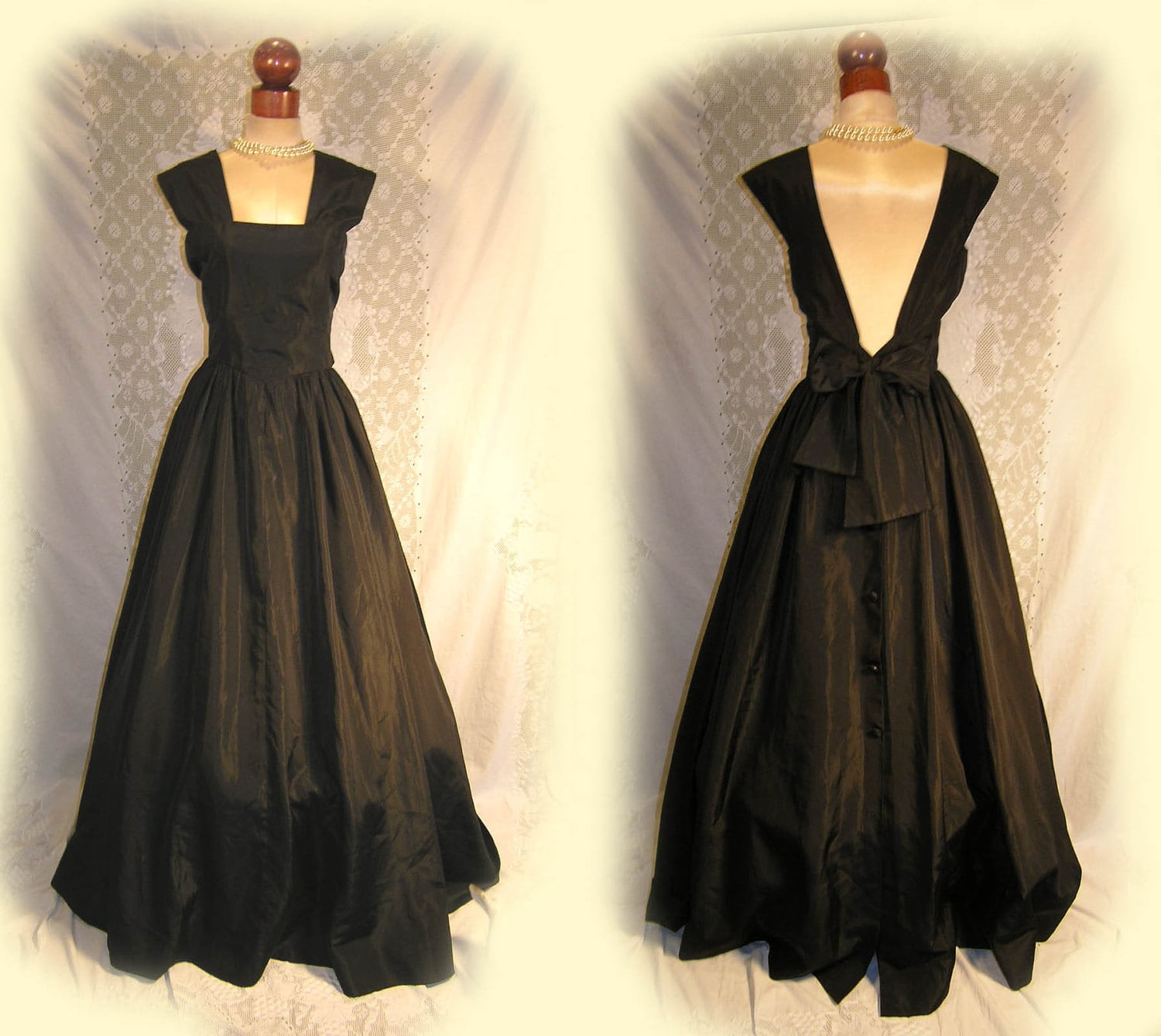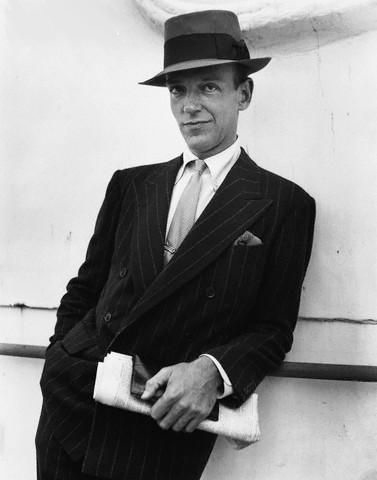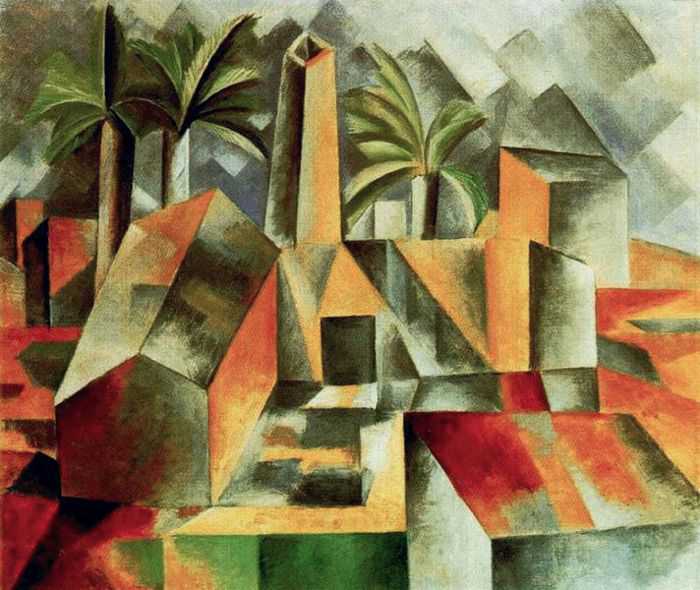The generation gap was growing evermore throughout the 60s, and it was noticeable. Youth was at the front of society and they were getting confident and determined to create their own styles. Some teenagers were even getting part time jobs and fending for themselves too. Adolescents were becoming the image of a budding youth culture.
The new found freedom of the teenagers led to what was the 'Flower power' decade in the coming years.
Sunday 6 January 2013
Textiles Revolution
As the years went on the textile mill revolutionised, science had arrived and they created more synthetic fibres which broadened the horizons for different fabrics and wool and cotton were overshadowed.
Synthetic fibres were easier to produce, easier to dye, easier to take care of, they could drip dry and were crease resistant.
Synthetic fibres were easier to produce, easier to dye, easier to take care of, they could drip dry and were crease resistant.
Menswear 1950s
Throughout the war years Menswear hadn't really changed. But after the war however it was suddenly fashionable for men to become fashionable. Men started to look more like 'businessmen' wearing bowler hats, pinstripe trousers, and longline single breasted coats.
The youth of the 50s created a new style inspired by the "Dandies". This new look was aggressive and was called the 'Teddy boy' look.
Teenagers began to follow 'Fashion culture', and this was when the Jukebox culture arrived.
The youth of the 50s created a new style inspired by the "Dandies". This new look was aggressive and was called the 'Teddy boy' look.
Hairstyles
A new hairstyle was in fashion. This was called the DA (Duck's Arse) because at the back of the head it was shaped like a ducks back end. One of the most famous people to have a DA was Elvis Presley.Teenagers began to follow 'Fashion culture', and this was when the Jukebox culture arrived.
New fashion styles welcomed in the 50s
In the 50s, after the war people began to have a lot more leisure time. They went for more holidays and this gave way to a new wardrobe of summer favourites. Beachwear became very popular, and the beachwear stykes were very big in America & Europe. St. Tropez even held annual fashion shows.
in 1947 the first bkini was revealed, but it didnt really take off until a later stage.
The arrival of denim
Denim was a new thing in the 50s and it was labelled 'the uniform of teenagers'. It was cool to wear denim. Denim was used alot to make work uniforms because it was breathable and strong and resistant too.
Women's Fashion in the 50s
The Floral daytime dress
The Floral day dress was proably the most iconic garment of the 1950s. It was influenced by Dior's New Look silhouette.
When the war was over, women were encouraged to go back to their traditonal way of living as men went back to the workforce. They were expected to do the cooking and the cleaning and to keep their role of the 'homemakers'. Women in the 50s were also 'perfectly groomed'. For example they wore eye make up, they wore earrings, gloves and lipstick.
The Stiletto
The 50s saw the introduction of the 'Stiletto'. Which was the footwear equivalent of Dior's new look. It was elegant and sophisticated and was very fashionable.
Change of fashion in the 50s
People started to be more positive after the war. Society took a step forward and so did fashion. It became a household name and it was shared by a wider audience. Christian Dioir revived the 'New Look' in 1947 and this re- established Paris as the fashion capital of the world. Some say that Christian Dior saved the Haute Couture industry.
After this success, Dior's name expanded as he created more fashionable styles and celebrities like the likes of Eva Peron started to wear them. Dior always named his collections, one of them being Envol (1948) this featured scooped skirts and jackets with stand up collars that rebelled against any other previous fashion, this meant that it attracted a wider audience because it was different and people wanted to be different.
After this success, Dior's name expanded as he created more fashionable styles and celebrities like the likes of Eva Peron started to wear them. Dior always named his collections, one of them being Envol (1948) this featured scooped skirts and jackets with stand up collars that rebelled against any other previous fashion, this meant that it attracted a wider audience because it was different and people wanted to be different.
WW2
The Fashion industry grounmd to a slow and final halt in 1939. Paris and London showed the last fashion shows of the decade as storm clouds gathered over Europe foreshadowing a fierce war that was about to take place. Throughout the war rationing was very big and even clothes had to be rationed so this was the main reason that the fashion industry stopped in it's tracks.
Fashion in the War
War changed fashion dramatically. It wasn't about being the best dressed or having designer clothing anymore. It was about having practical clothing that you could survive with. Clothing was being rationed and so were Nylon stockings, so people adopted the slogan 'Make do and mend' which encouraged people to repair their clothing and how to make other clothing out of old clothing instead of going out and getting new ones.
Vogue ran articles about having 'your one and only dress'. Which mean that you had to have one dress that would be your going out wear. Women were encouraged more and more to join the work force so Vogue adopted the slogan 'Dig for victory' which basically meant that the women had to porduce their own food to save on other food resources. Silk also had been banned from civilian use and the rationing of tights meant that American soldiers were the only way of getting more stockings.
Utility Clothing
The Board of Trade commisioned for designers to create a range of clothing that was practical and could be mass produced to save on fabric and labour. Women that worked in the munition factories wore overalls or boiler suits, their hairstyke waa the last bit of glamour that they kept hold of. It was fashionable to have your hair long and curled and to be worn up in a turban or hankerchief. This also was for health and safety requirements.
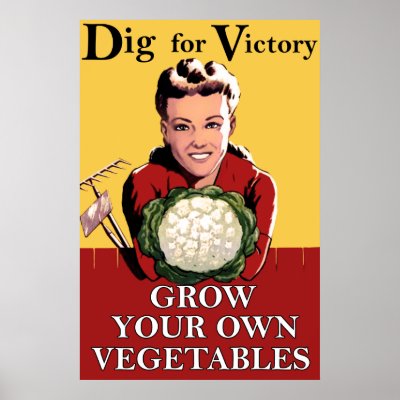
Fashion and how it helped in WW2
The Paris Hat
After the fashion industry came to halt in paris in 1940, women adopted a new style of hat that laughed in the face of the Nazis. It was oversized and the women wore them with dignity because it showed that they were not scared to stand up with their fashion.
Fashion was also used to help in the war. Accesories were planted like handbags were planted with secret false bottoms so that women could hide resistance leaflets in them. Even scarves had maps of France printed on them to help the soldiers.
American culture
With american soldiers being mobilised in Britain and Europe America had a big influence on the people. They brought over Coca-Cola and chewing gum and Nylon stockings because sweet things and clothing was not being rationed in America. This began to attract the British women and the American soldiers wooed them with gifts of Nylon stockings.
Dance crazes
The Americans also brought with them dance crazes. The 3 main ones were 'Boogie Woogie', Big Band' and 'Swing'.
Zoot Suits
Zoot suits were a style of suit worn by black musicians. It consisted of high waisted trousers, wide legs and wide lapels. This suit heavily influenced menswear at this time and it showed that people were daring to be different. This also supported the situations going on with racism in America at that time.
1947 - War over
In 1947, Paris began to get back to it's usual ways and the fashion industry started up again. The collections in Paris in 1947 were what became known as "The golden age of Couture".
Fashion changes throughout the 30s & 40s
Fashion took a very different path from the roaring twenties in the 30s. It was a quieter era and the emphasis was on being respectable and behaving and dressing properly. A large contrast to the 'Flapper girls' of the 20s. Because of the current depression people trued thier hardest to dress elegantly and sophisticated. Making sure to look presentable because it gave off the image that you were still well off.
Hats were a main element in the 1930s. Almost everyone, men and women, wore a hat or cap when going out of the house.
Women's Fashion
Women's fashion in the 30s was sort of a mixture of the past. It was fashionable to be more feminine with a slightly rounded bust a curvaceous figure. It was more in to have longer hair this time and also bias cut fabric and frills, with plate shaped hats that pointed toward the back of the head.
As the 30s progressed into the 40s, the silhouette of women's fashion changed again. This time it was more fashionable thave figure hugging clothing that had widened shoulders, nipped in waists and long narrow skirts.
Hemlines became uneven, and the traditional 20s Godets and pleats that usually came in at the hip now came in a knee level to change it up.
Men's Fashion
Men would wear suits when going out to look presentable also. They would only sit in their shirts in the privacy of their own home. Those that had little money would also try to look respectable by having their 'Sunday best'.
Burtons
In the 1930s there was a mens tailoring chain named Burtons. They made affordable tailored clothing for all men. Burton Clothing is still around today.
Nylon
Scientific technology had expanded which led to the creation of the fibre Nylon, this then introduced 'Stockings' for women.
Fancy Dress!
The fashion of this decade was so varied that an element of fancy dress even became fashionable at one point. Couturiers introduced a hint of fancy dress into their work because they had been insprired by different historical periods and the vast aray of different countries' styles and cultures.
Destruction
Wall Street Crash
At the end of the 1930s there was a very unfortunate event that took place. TheWall Street Crash. People went into depression because they had no money, no savings, no anything. Depression was in the air and this contrasted vastly with roaring 20s of luxury and glamour before.
The new found financial crisis opened up a huge noticeable gap between the rich and the poor. The wealthy would still be able to run a house in London as well as being able to travel to a weekend retreat. They could afford to keep servants and be well educated and to also still shop in designer boutiques.
However, the poor was a very different matter. They had to stay in rooms with whole families of at least 8 or more in them with no running water and no inside toilet, no anything. They had to walk the streets looking for jobs and searching for where their next meal would come from.
Saturday 5 January 2013
Womens' Style
In the 1920/30s, women were going out a lot more so a new dress was introduced, the 'cocktail' dress. This then versed the tea dresses from before, because girls preferred the cocktail dress which were in the Paris collections and were often embellished with sequins and beads and attratced a lot of attention.
Curves had been banished from fashion and the corset was no more. It was more fashionable to have a boyish undeveloped adolescent figure rather than a curvaceous one. In 1925, Chanel created straight hanging jersey dresses that hung straight from the hips. These dresses were sleek and elegant.
Mass Market Production
Previously before the twenties, you were only able to buy clothes as one offs or if they had been made for you. But in the 1930s a new style of dressing was made available, mass market production. this was where you were able to buy clothes that had been made and produced in large batches.
Exposure
Toward the end of the 1930s, the new fashion was 'exposure'. It was the fashion to show your bare arms and sportswear becane more readily available and even more fashionable. The industry developed this new exposed look in evening wear with long plunging backs, trims with drapes and bias cutting.
The Fashion World
By the end of the 1930s the fashion industry was booming with many different types of jobs for people: Couturiers, jewellers, furriers, fabric printers, milliners, designers etc. Everything seemed to be going well.
Menswear
Menswear in the 1920s to 30s was very different from the styles of the past. Men wore a new style of trouser called the "Oxford bag" which were made out of grey flannel. They were introduced by graduates from the Oxford University. They usually wore these trousers with blazers which created a informal lounge suit.
Gigolos
However, this traditional english gentlemans look was then overalled by Gigolos, these were dark young men generally with a south african background who slicked back their hair and wore immaculately pressed tails and trousers.The Arts
Cubism
Cubist arts are objects broken up, analyzed and reassembled in an abstarct form.Exhibition of Decorative arts
The exhibition was held in Paris in 1925. New contemporary art was takinmg over and there wasnt an art nouveau curve in sight. Art deco was derived from this name and is what it is known by now.
Art Nouveau was no longer popular and abstarct and cubist art had taken over, the emphasis was now in line not decoration.
The links between architecture, fashions and the arts are clearly shown throughout the images in this period.
Hollywood
Hollywood and film became very famous in these times. Women strived to look like the women in the movies.
"Vamped"
Hollywood stars became fashion icons and women like Theda Bara and Pola Negri introduced eye make up inot the fashion world. "Vamped" was the nickname given to the new fashion. This was mainly focused on eyes and dark and intensely dramatic make up. It was the fashion to conceal the brow and forehead with a headband, ribbon or fringe.
Subscribe to:
Posts (Atom)
